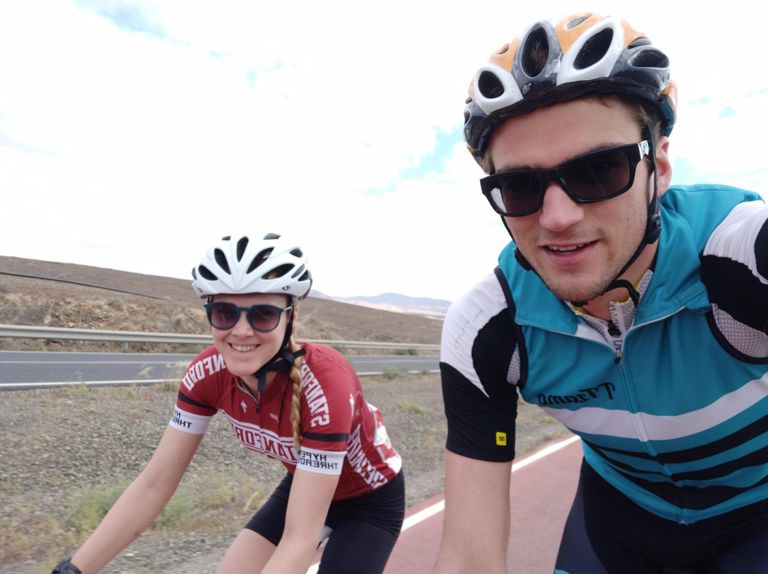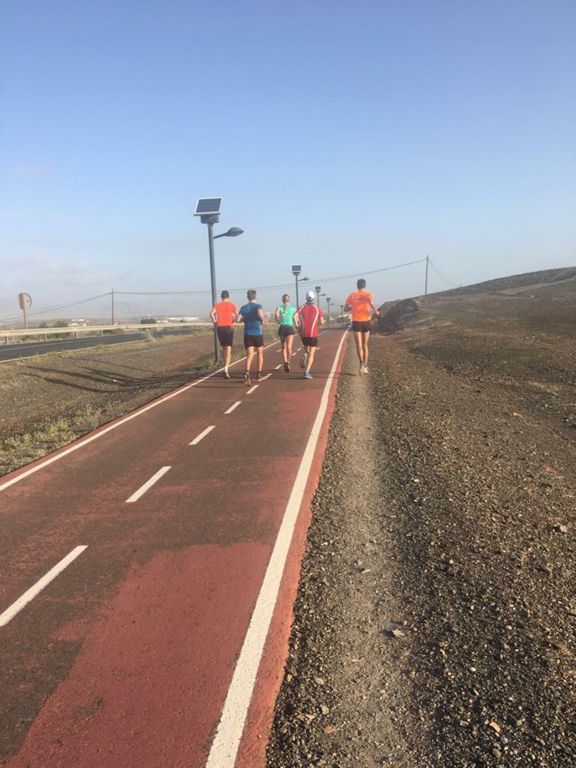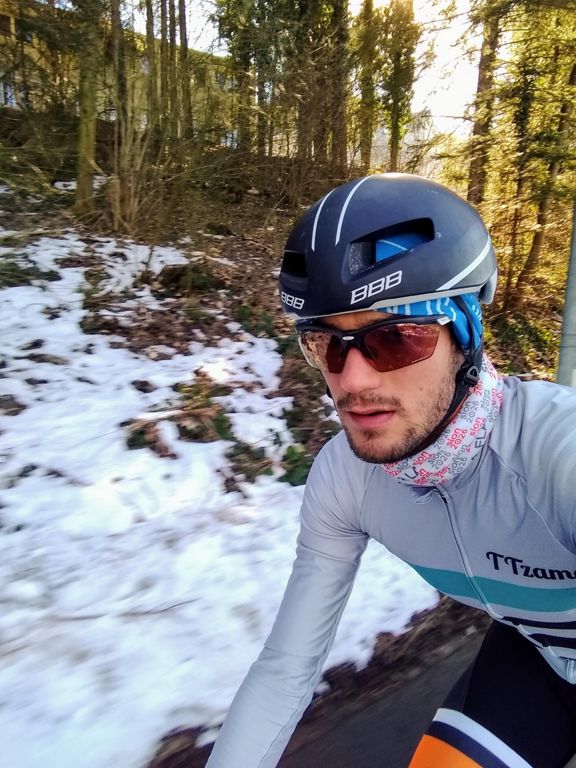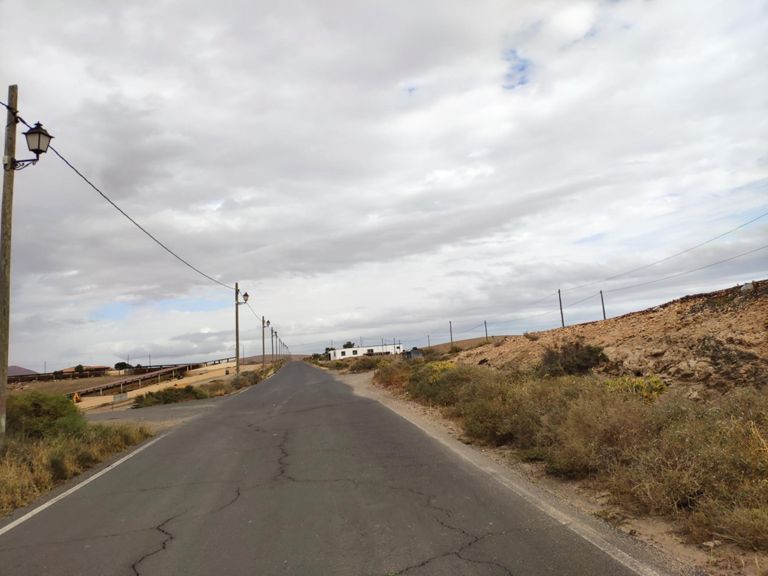Pas une île à moyenne
Vélo sur Strava par Daniel: https://www.strava.com/activities/2153221856
73.2km - 3h12' - 1264m D+

ashkDhdktASJiDhA]LGFAJDXz@rDGbA]j@Gf@ZhCFbB?z@Ev@Q`AU~@Y|@_BrEqQxh@wHpTU`AIv@Cx@Dx@Jv@J^Rl@^t@bAtAhBrALNJRP|@JXhDzEh@h@z@h@l@R`ARrJlBr@HlADvBCtI?~@Dz@Lv@V`Bz@zBz@f@b@zH~D\RXX`@l@Tv@F|@E|@Ov@w@~CEHQDEBM\kC`LOd@ORIFKD[?mIsAsAOmAC_JBeBAiCIiF_@}C]uFy@gDa@_C_@kC[sZeDiAE]JMRQ|@uAhF_@xBQnBElBFnCHjB`@nFDx@E|@m@fHKx@Mf@Sb@WZyA~@g@b@iAdB_AhBeCnFq@~AwFbOu@dBu@zAu@nAk@z@cGrI}CfEk@j@_@X]Pm@RkAV}@Jc@?o@K[@OHa@\[RODMFK?y@Tc@H{AJ{HNoFd@qC^kI~@gSdCgL~AYFe@RYT[f@K`@mA|F_@dAUd@W^uEbFyAjBgD|D{FpGs@h@gAn@i@V_Bh@ULgA~@c@h@m@lAoDpIqJtTWb@W\CJMH?Fb@g@T_@b@}@lEgKBOgDbIsAtCg@p@a@^cAl@}FhCeAj@k@b@o@t@g@fA[vA}AlOMhEIzFIhAq@~CoAtJeAtGcDlPgAvEaB`GyBxGsA|CuArCI\Gb@GhB@BBE?MEID[Bm@Js@Z_Av@{APe@Fc@AYIWMWOUSOsAk@kA_@o@Q]Eo@@kEZyA?qFQyDG_FM}@MgBa@c@Ic@C_@@uFp@uJpAmKjAaEj@wAZ}Af@sFrBe@J}@B_AGe@Kq@Ya@[OYG_@?YJ}@Ce@GQKOYYWQYGQ?QBqElBWHQ@UGWWwBeDW[CA?Dn@v@fBrCZTVBZE~EqBPCN@NBLFXVTVFLD^KbA?^F`@FLTVXR^P\J^D^Bl@?v@GFCCEC?WDe@Bc@Ak@C_AUu@a@SWMa@?c@JcA?SESOUWWUQQIUAYDcFtBY@WGUWoB}CyBoCeF{FgCiCs@m@oDaCkL{GkFgDe@g@aAqBQSWSmG{CyEcC}BqAeHyCgAk@aAu@mCwCmBmB[Um@UcEw@{GuAcAWmFeAWGUMIIOWE]DsBCw@Gc@Su@S]}@aA[S_@Ma@G_@C{C@k@A]IYSUYq@kBu@gBsAmC{@qBkAcDe@eAw@oAsAuA{@u@GKGOMGYFc@GWMYYQGeA?M@qAFW?M@QPg@x@cCzEm@r@oCfCi@n@Ub@c@bA{@`CS\s@z@oBrB}AzAkBpBcMhM}@p@s@`@{An@{@RiAPmAF{AAkDWe@@e@HYLYTW\Wf@Or@Az@J|@Rf@|AlCj@vA\|AJfAD~AGzEK|A[~AUr@]v@_@n@_@b@_@ZyFbEq@^w@^qA`@g@J{Cf@a@Jg@X]\Wl@Id@C`@@n@JzBBx@IrAUbAgCbICL@@FEV}@z@_Cj@qBXoAJw@@_AM}C?gAHo@HWXg@`@_@f@SxEs@bBi@jAk@bBgAfDgCh@i@TY\i@Vk@AIE?_A|A}@~@}DzCcAr@yAr@yAb@}Bb@m@Dq@LQFa@V_@^Wr@I^AZ?r@LxB@x@GnAKp@i@pBeCxH_DnJcBxEq@vAwAdCqAlBeArA{LpMqAbAk@Zk@TuA\k@Hg@BmCC{JO}@Dy@TYNUTe@p@oAnCc@v@y@z@[R[Nq@Lc@@c@A{Ck@a@Eq@Bk@R[R]j@{@hD_@`AUZoAz@YVUZQb@Md@Gf@Af@@TJd@nAjDX`AXnAJlA@lAQrAERVjEMlF@n@Bn@RtA~@hDVtALbAZnFTvAtA`FZ~@Vf@Xd@n@r@jC`C`AhAnAvBn@rA^`AVdAJhA`@xL?l@E~@c@~CEh@?|@Jx@Tt@Pb@zC`GxB`At@f@RVb@pAR\RjABd@CX_@nA]`A[p@e@h@WRq@XKFORM`@ElAEPEFMFO@WEi@Mm@[{@q@m@U{B]_EaAWC[@MHEFERBHNT|@`A|@~AJd@Fn@APKXUZSLm@Po@HgA?eCMeDG]?MDQPI^DXXlADV@v@AZELOHk@AWIMOq@uAYs@}@mD]gA[a@aB_BsAwA[e@a@}@QOSCe@D[?mAE}@Oy@SaBm@g@UsFwCs@[yAU_D_@c@Ia@Ww@eAMKGAG?ODMLEPElAKh@Sd@OPMHm@JkAAqAHUEYO[a@Qg@]kESmBYcBISMOSESHMRYt@MPo@j@q@\e@J[CYMSU[aAg@kCGk@Cw@FyDCWMQKEU?UJGFkAhB_BvBO`@WjAMXMLWLODQ?c@Ca@Ki@g@Y_@[}AMyAYaBo@cF]cBKOGESCI@UHYTO\i@vBMZk@x@_@VWJaEz@aBHy@GcBWiASYMWSS[Qs@Ca@JcATcAF_BZmBDy@DsBJ{@Rk@Ve@PMj@]^]R[La@Ja@@WS}A@WFWL_@LS`Ay@Va@FS?a@OmAK_@Yo@Gk@Fk@b@qB?e@WcAa@gAWWSGWDgBz@w@RSHu@f@qB~@iCdBQH]Hc@\IBOASIKORSLEL@`@T@GCAg@WIANHLLNDR@h@M~ByAnBaApAw@fA_@fAi@`@MNALBJHr@fBLf@Dj@ATa@fBGj@Dh@b@hAN`A?j@CTIRKPaAt@MPSb@Kh@?TL|@@j@Kh@GTKP[`@OLs@^MNWb@Oh@MdAE|BEr@WbBEnAUhAIp@AVDl@Ph@JNLNb@R|@PvC`@lA?DCCA_A@y@IgDm@QGWUMOKQOw@AYH_AXmA@UCA?R]vAI|@B^Hb@L^JLXV`@LrDh@`ADbAEl@IrCq@h@QRK`@_@\i@Po@ViAHULSNOPKPEP?NHJLDPZpBd@~DVbBJpANz@Nd@T`@ZZNJb@Lf@DRARENKLOHS\wATi@|AuBz@uALKNIPCNBNJFLBNMnDBhALv@Z~AZlAV^NHb@JP?PCt@[l@e@V_@Zy@JMNEN@JFNZPz@RhBb@nFNd@HPZ\NFRDh@@|BEf@KPKNMJSPm@DWDgABSJMLGL?LFv@fA\Tt@PnALhBV~@RnAj@tEdC|@^~@\l@PfARfADbAAR@PFLL\t@X`@jArAfBfB\f@\`At@|CZ~@v@zALL`@NPBNANEJMDS@k@AUKo@Qk@Gk@BSHQLINEv@@zGTl@An@Gl@ORM\c@HSDU?WGm@Sk@e@y@[c@w@y@EO?QFKJEL?^B`Dx@vCd@d@NzA~@z@\d@FPALIFODQD{@BSHSLQNMt@]\YVYT_@Rk@D]h@}ABSCUa@oBo@qB[[_CqA{@w@}@cBaAuBWo@Qo@M_A@q@JyATkBBq@@}@c@eMIy@WkAq@aBiAwBg@{@e@m@k@k@gB}Ai@g@o@}@[s@e@wAm@wB]{AUcBUmEIy@My@Qu@{@cDOw@Ee@Ci@?u@HsC@}@Cs@SmCBe@PwA?iAKkAa@oBYeAaAqCKa@Ce@Bc@Jq@Ri@RYVWtA_ATWZs@`AsDR_@X[f@UTE^Cr@F|Bd@^Dv@@j@IRIp@_@v@u@d@w@bBmD\a@p@a@f@Ox@ElNNx@Cx@Gh@Ih@OlAi@bAs@x@w@zL{Mv@eAbA{Ax@wAh@gAvAoDxG_SrAiE\wAHu@@{@Cm@EOC?ABB`BIdAc@jBk@nBm@~A}FdQs@nBo@zAk@jAeBvCwAlBmBvBkIzIq@p@c@ZkAn@g@R}@TkANeA@cAACDBBJ?xAAp@C|@Kp@Mj@SdAg@XU~AwArIiJlByBlAeBl@aA`B_Dv@qB|GiSp@qBz@}CR_AFiAC}@KmC@q@Ho@HWZg@b@_@l@UvEu@tAa@tAo@fCeBbCkBVWj@u@v@wAL_@VcANgADc@BkADwCEqBKiAGa@c@cBo@yAeAiBYu@G]E{@B]Pw@NYRUVSVO\IZE|@@xBP~@@|AC~@I|@Qz@W|@_@z@g@x@m@pAmAxUqVb@o@tAqDj@cAb@g@pCoC`@i@|A_DrAcC@KCA[EAJFXI@IPR@FUHIDAvA@pAG^DNDv@d@b@DRCf@Mz@_@xBmAlAy@`DiC`C}B~CgDxAmBrAqBl@qApDmKn@oAjB_Dh@cAVu@f@}BVaA^}@R]l@u@r@o@r@g@pTyMpA{@z@s@t@w@rAcBdXc^pA}Af@g@`Ao@`Ai@tSiKpBw@|A_@ds@_Nta@cIzAa@tAc@vP}G`AYdAS~AKpw@wBrEOfBQ`\yD`NoA`AEvABRCdBc@`CUnBG|CE`NPbD?fBG~Qq@|AIrCUlADPEdA_@t@QxDq@jl@gIbCWlAAhABjMp@tALh_@`EbFr@bJvApBV|ANrCN|ELdL?zA@bAJfDh@xDt@^?NEJIN[~CoN@EJAj@VHBBAAGi@UCEfA}EDe@As@Gi@K_@Ue@[_@m@e@wCwAmDiBm@g@_Bk@_CiA{@Wu@Ku@CcMDo@Ai@CaAO}K}By@Wm@]i@g@e@m@cBaCo@eAGSOw@IUOQ}@o@g@c@SSa@m@_@o@[u@Oi@Ii@G{@@iALaAR}@~FsP\kAn@_BpAyDH[xBiGzLa^l@uBRiAFiABo@E_BIaAU}A?Q@MHYVW@G@OH]?IaAkEDMJIbAY
It's not Fuerte but almost
Vélo sur Strava par Jean-Claude: https://www.strava.com/activities/2153136018
100.7km - 3h34' - 822m D+
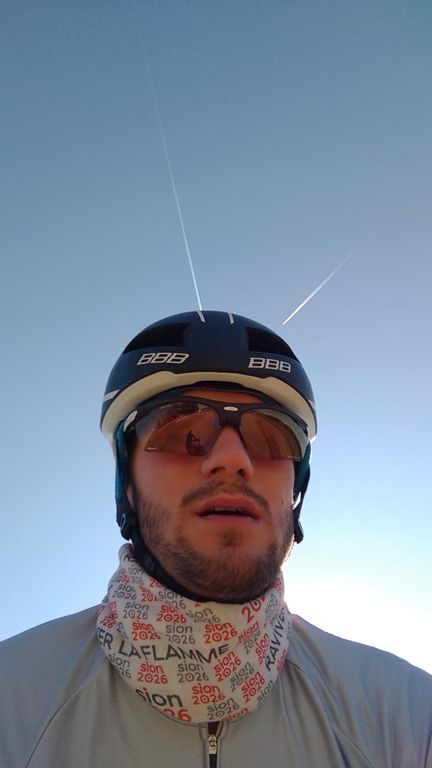
uik`Hcz}r@?CLOfAoBj@o@RIHQ?cAQuCSqBG[IYk@gAyBqDgBiC{@i@y@s@eAe@KKEM?SHkC@GN?BMEQGKi@q@qAgAsA}AuAsBgAsA}@{@o@]SGMKGMGg@GoA?qAKgBeAwESgAWeCQ{Cw@eFi@yEYqAaC}HOo@]sBQqAOaDa@gFCWMm@cAyBo@mAyAgCWi@]aAOk@Ie@GcAM_@S[UWWMeC_@WGcBk@yAy@{AmA]_@cB{BMSGYEY?[^wCbA_E?QCOGKUSg@YiAm@[MqCa@Y?k@HMCKIEMo@eBc@yAYu@_@uAU_@EEWDIQGAQBIDsAz@eDzA_Ah@aFrB}@l@s@ZwEnBwAd@mCjAk@\_@Z{CrCuCtCiAlAw@fAa@x@e@tASbAo@pFc@lCYdA[~@a@|@Wb@Wb@cAhAi@h@k@b@w@j@kE~Bs_@|QgAp@w@`@c@R_Cv@iAXcD^iBHwBVoBJuHn@q@XoAZe@Xu@n@c@n@}@bBg@f@W^MLMHc@FO?OA_@Io@SsHuCmAYq@Es@@s@Jw@Va@Xa@b@[n@St@QzAa@jIQdCU|Ba@lCeAdFoA~EwAnEm@`Be@hAu@xAo@`AcC|Ce@f@aAz@u@h@oGrDi@^s@n@sDtDo@`@KXKl@@N`@tB^lCDfA?fAIdAOxAgAtIaDvUWxBI`AGrB@xBJdBTdC@nAN`A@VG|BIpAKt@Qp@i@~Am@zAm@|@a@^e@RoB^q@TyAdAeAlAk@f@_@RODuBZq@R]T]Vg@p@_@z@Oh@iCxLU|@Qd@]r@W\}BfCe@l@W`@w@`BkBjE}@bCUfAIfA@bALhB?TGd@GPKNWVk@\oAl@c@Lc@Hu@B_CIeAMuAYa@E_@Ao@D}@JeEn@o@HkB^M@MAKGGKmAkCiAmCe@yAoAeFwA_ESw@IIKBOXUz@KbAQzDKdGBvBf@lJ?zBM`Bg@fDQj@i@jAET?PBPn@dA^`ALr@@X?r@mHxi@_BlMS|@Kj@WdCIvAEzCDvDb@dLHpAH~CTbFC`@Mh@Ef@GFIBY?g@Ay@M[Kg@Wg@]WYaCgDyBiDeFoH}KqP_A}AeFoHy@_A}@o@s@Yg@Kw@Ey@Dk@Jk@P{DpBg@Pg@Ji@Bi@Cu@Mu@Ys@e@wPgM{AqA{@cAu@mAc@gA_@}AGKICK@SPa@p@IDIAoCqAcA[gAWaQgDeF}@cFaA}ASaAG_ABe@B{B^eAZw@`@aAj@eC~A_Ap@q@p@sAbBQNGBa@Ac@`A_@j@iBvBYl@m@lBa@l@a@b@aB~@{@ZWFiBRu@?s@PkBv@{BjAaDlBoB|AoFtEcAr@{@X{MvDuCv@kAV}@J}@DgBEsCMwBD[f@sChCe@XmCnA{@r@m@t@i@~@Qf@a@~BSfBOt@QZWL}@Fq@GoCw@gBu@uASuAIo@OY?WJYBgBE_AImAY{Am@_AQ{E{A_@I]C}@BiC\iBXeAXy@L[?oCQk@@]BcE`AyEbBw@d@u@l@aHbI_ArAYZYv@uA|Ci@zAW~@W`BcAfEMhAArCEbAO|@O\MN]ZWJYD[?a@OWEu@@e@LQLWZs@~AcKjWc@lAc@nAa@tBeEdWi@xBi@tAaAhBcGjJi@n@URoBxAg@j@QX]x@U~@s@pFQbAY~@cAjBoDrFcBrCeDzFcErH_@^OHQBO@g@CMDO\_@hBQf@Ud@Y`@cD~DwA`Bi@x@Wh@k@~AyAhFiA`D}AzCkBbD]x@W`A]vB]~AsBbH_AtCc@pBU|Ak@bFy@|IYxBa@rBY~@_@|@m@fAe@n@cBlBKFM?KGIMGQYgBGSIMeA_AKEMAMBWRIPqAhDYf@_@`@gAn@e@\u@v@cAjAMLOFMAKGISCU?U\aBLuBFu@l@kC@[MQi@ScCiA]UMMKSGk@Dg@d@qDXkARgBHcBAk@Gk@@KjAsDf@eCNgAF{@FmDG{A?m@L{APsA\iB|AwGZ_BTyAJuAHkEGgBGi@IY]}@[m@]Yk@]mCqAc@YiBy@UYMa@E_AC_FIuAy@eEgCeKe@mCg@{DUqAy@{G[{Cg@mIm@qIa@wEk@eF[qB[_Ae@w@YYo@a@c@UsGiBmBk@wGaCoA_@_AUwBSq@O_@Qm@a@sDuCsAkA}D}DeBoBa@q@k@aBi@eAsBkFsAwEa@{BWy@c@eASy@Mg@UuASwAQc@]e@GMMy@YcDIi@Mi@o@uB[u@g@eAsBuDa@gAa@gBsCaNe@eCIwACaBJeEDcDD}WKyByAqREgCEcIIoBOwAg@qCa@mC_@_D_A_OSaCaHeq@WkB]_Cc@sBWs@o@qAi@{@M_@AQ@QV{@BSAEKOGCw@Q_@YQW]y@a@w@sBuCi@{@{@gBaBcEUw@yD}I}@{AiBeCs@}@m@g@WO}@_@gCgB}A}@eBu@g@YsBkBcBmAWWW]Qa@yAiEe@aAc@i@YWyAq@YUe@e@a@m@iFiKQYKAKBUTuJnLy@hAQp@mBnMCf@@f@H~@TvANj@HPJLj@VVRRXLZLn@^lCv@hEFx@FxADXt@tCN`@Nh@N`@BX?FMZg@x@c@vAMR_@Xq@Z}@j@a@LIJAb@RtB?TGZQb@]h@]Zm@b@STO\Id@Yz@YhDGtAGh@AZ?t@Fb@LnCAdABl@HbAT|B?fCKh@OZ_@d@YPcCnAuAd@gAT_BDsE|@q@Fq@@eBCqC_@}AGm@Ii@Qi@Y{AaAoAgAKEK@s@bA{@bBYr@a@l@g@b@c@VqAdAeCnA_@V]Xw@bAaCvDeF|Gc@f@wC|ByA`BgCdBsFxB_APo@FeDFGBCDAJCbA@`@\|ARvABnA?b@CXDR@SBEFCbACvAQjEcAdAOxAGt@B`DPd@?b@Ed@K`@QhBaAd@MRCf@Bd@PNJ^`@LRTp@Nt@BZ?vAw@pJg@`JW`Iy@l\IdGJlCPrALt@b@fB`AfC\bAl@xCJx@NrBDvA?z@MxAoArIGX_@fA]f@k@r@a@ZwAt@a@X}@x@k@p@q@fAm@jAe@nAc@tAqAxGqAjIYpCUpFOrBk@|CMj@Yz@gCxFa@`A_@hAg@bBiA`FuBrLo@`De@nBo@hBq@bCsDpKu@xCcAlFSrAc@lD{@lLgBrUMtCC~BLjGbCvz@LfE@hAP`Ef@vQZzLB|BEh@Q`@KLMHy@^uBx@e@\KLS`@Oz@Al@@j@|@~TJbBH~FHn@Nx@t@pBRt@LdA@x@G~AeAjG_@xD{Br[MhDO|@ARD|@GjBAzCCRENGFMBMI_@eAoBwEiBoDsAaCyEeIgJaPqQg\oCoEeAyAsAaB_CeCcAy@w@k@}CiBkHkD{BmAyA}@aCaBuAeAqAiAiFmFuAoBeCuCgC}CyBcC_LmLYSYOWSoNiO}AyAsB}BsGmG{BuCIQEQASDc@`DiG|@{AnCcEh@m@~@y@lAo@lAa@rCq@jBe@LC\?ZGnBk@nBo@xCwA~CkBlB_AfBs@l@U|BaAbGcD|@]dFeBnBaAvA_AhAaAlAy@dBwAfAeAj@s@z@mAlD{Fr@y@^]b@Yn@[tAc@xBw@hAY`@Qb@Ud@YnB{A`D{CvAmAdAq@`Ae@rAg@~Au@dCcAlAMl@CZ@bANn@NTJxAlArAvAlAdAXRdAj@n@T|A\pADp@?n@EJA`@SHCb@?`@BLCDGHYTwB\iCb@mCXqAf@sB`AaDnEqMtAeGtCaP~@eEXaAz@cCf@qA`AuBb@iA\cAPw@r@gEP{BTcEV}BxBgNToAXkA\gA`@cAf@_Ar@gAv@aAn@m@p@g@pAw@^[l@{@Vg@J]T}@j@{Db@qBRsABcAAaAS{D`@qERmA\uAdBuEvAkEp@mCjAmFj@eBf@gA^m@p@w@l@i@h@]`@S`HoCp@]z@g@|@{@p@}@zF{J|A_C~FaHfCgCnBaCl@o@nA}An@o@p@}@bBkBb@w@tA{C|BsFb@qAP{@J_AReCDaAAeBIeBKcAQ{@Ym@QQQKuBOm@Qk@_@SSOW[u@O_AE_AZcGAaAC_@SoB@UFOLCJBV^XdAn@dDRv@f@jA`@h@jAbAbBlAh@V~Br@h@Rf@\PP`@j@jCfFv@bB^tAh@~CR~@LZ`@p@h@h@~@x@pBnAl@XVFVBX?VETIj@a@x@aAd@o@`@w@Z{@`@aBtAwHT_AL]`@u@~AiBzAmB^o@J[hQum@t@kBf@eApA_DbJcUtBaFl@qAt@iAlDkEdHgJlDiEhCiDtDyEVm@Ji@HeDNcBb@{BNm@Z{@R]~A_Bz@aAvAqB\m@JGJ@LFbBrBt@x@l@^`@JdCH~@Aj@KTIRIh@]x@{@n@kAv@sBxA}Ex@cDx@yDh@sC`@cDVqAB?RJZJjFnAn@HVGPQFKf@qDPy@Vi@NMXMP?r@DVITWv@sAN[j@[b@Mr@IzEkAh@GbCi@`@Gh@QxEcAvUmFZENDZUpHcBxEaArAKtCGbWcCxMwAv@OZST]FQ@i@a@mGGa@Om@@OnBiFxD}HHe@DoA`@uAFMHIHAJD|ErGHDFAFINu@pEwPt@iCfB_FbA}Ap@_BTq@VgATaBzC}`@PgAJQHAVJfDlBzAv@j@^Z\b@n@b@x@v@nCZ`@|@t@Z\Vb@p@lBJRZ^\PLD|EZf@HXJ`@^vA|B^b@n@b@pB~@tA|@xBnBjCnCVTXLN@Z?xCa@vC]t@MpA]h@GlBAdDDzBAx@IdCi@p@IbBI~@ClBM~AInA@jEVj@A|AIp@?bAJbA\z@f@`C|Ap@XhDbAfE~AjAn@b@f@H@NEf@c@v@aATa@dAiCfCcIb@gAVg@t@eAn@m@h@]dA[j@GbABbAZx@Jb@Af@GZIbBi@fAYt@[l@I\?l@FtCn@f@Rj@^HHT`@FDH?vAs@bCyAlAg@xHqBvEcAl@Sd@Wf@M^[z@SbBe@j@_@^CjB]z@InA_@vEcAtAWx@WxEmA`BO`AYhBOn@Cp@Gd@ALBf@PzAx@|A`@rFpAzB`@t@ThDv@x@Fb@@n@IhAW~FeB|@a@dDs@rC{@fAc@p@Ox@YbASjA_@j@U`@KrAo@`@Or@Q~@e@bA]fCiA|Au@fAa@p@Gl@HV@zAv@h@VxAb@~@Lz@AzG[z@Qb@Ol@_@hEoDhBsA|@i@jBcBrQ}N~EuDlD}CzCyC`EeDlBmBdKcJhCyBhAeAhHcGzFaFvBcBv@{@tEcH`AmB`ByDBKEKGAE@TABAXc@tAaDtDaIvCyGLa@VkA`AoCr@yCTu@^k@dAy@V[vDqJv@wBr@sCRkABS?y@Fa@FMPKF?NLJDBABGZgClDgSXeCDOHI|@a@b@EZBvDjAtAl@n@^h@\jB~Ad@VdEzA|Ap@ZHd@?JFFJBR?Tg@pE?jACNQVs@\}@j@YJMBM?MCMIi@u@c@_@KEOAMBYPWTwCxCmBdBc@f@[l@oEdMoAbDwEfJcAhByC|FaEjIgPhWqMfSyBrD{CpEaAbBm@xAg@~A{DfOSf@_@r@s@z@yFrFuAxAyApAuBtBiElEyArAaC~B_CvByItI}BdC[VsBjB_@`@u@l@m@l@cAp@}FvEqCrBsDvC}AfAsHtFeBlAQFoAVcA`@_Ah@oCrBkFfCq@TkBv@mAZwDl@k@D}BBSBQFONMTiAvDG^HVTJJ@LEHKL_@NgAHSDAtCdBhBxAjAlApA|Ax@lAlBlDbAvAh@d@bBlAl@n@tCrDn@r@jBbCvBhCrAhB~AlBp@j@f@Tx@PnCJ`ALf@Bt@LrD~@ZP|JtC`@PRPHJL\ZjBl@fClA|DZ`BZzBVhA^`At@tA~@nAhBhBZTf@Xd@JnBRNHPPd@|@rA|AXn@j@~A`@lANj@PhAVbCDXHTJRj@j@vBnBt@|@z@j@nDbDdB`BdAhA`ApAt@hAzApC`CtEFJTNNVVPPA|EeCdH_EtCaCz@g@`@]p@a@jGsETSN[ZsBLUNINANFLJHNFR\pCFNDALMNUl@i@rEwEp@g@xFeDhAs@~AyArBeCp@aAl@cAfAaC~@kCz@oCp@_Cp@qCbA{ERsAX_CVyC\cIPqBJa@Rm@^o@PQp@_@\K^G`AE`AD|@RbDtAjBd@hBn@h@LXAf@Ml@c@j@{@z@gBl@s@hAu@xAc@NCD@LNZbAl@|AdFbK|@jBn@fBt@~A`@h@VPXJXFX?NAhBk@XEhCs@tA[jASn@EjDEhBDbADHBFFDHDZJTj@ZZJRBh@C~BDb@H`@RPRPTb@`AfFnN`@tAbA~BjBdFxBzFVz@PxAt@fKzCb_@L~Bb@jD^tEDlABlGEbAk@pCaE`QAL@JFDjBXr@DNAbAa@NCPA`BDfET^JpAf@VFb@FtBPv@Bj@AXKTSx@e@vA_AhA{@ZQvB}@|@y@NS|A{CjB{C\u@HOXUt@_@NQHq@DG`B{@HAPIN@ZHXDPCROhAiAfAk@x@k@f@c@FKJ_@p@mHHo@BKFGF?FBp@b@vAhAz@`@tGhBpCf@~@Ff@JvB|@bBh@lBlAp@XP?JO`AsFHWDAF?FDf@b@Z`@FBJPLHRBH?HEFIhAgCl@aAhA}A\i@t@mAp@qAp@gBd@cA|BqH\cAHGHAHBjAf@f@\z@\VNdAd@p@RVDJGR]Vk@LMTuAPo@
15x1'-1' pour déjeuner
Course à pied sur Strava par Daniel: https://www.strava.com/activities/2152135929
14.4km - 1h02' - 159.5m D+
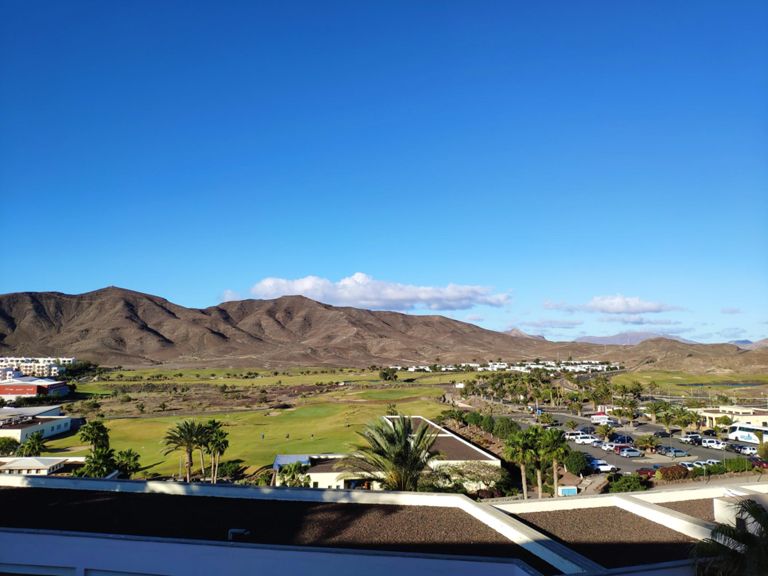
yyhkDrhktAp@pBVfAGVKP]LUDQ?WKYWu@kB_AoCUkAUwCI]Ee@EqAD_ACQEGe@Ki@EoAAYAI?IDMP_@x@YZ{@d@o@VmBvAu@z@a@l@m@nAq@`A_@^a@PWB[?u@KmB[aA]kAUsAE_@B_AEqB?sAC}AQIEAC@MZ}@b@_BhB{E^qAGMSIg@c@SGc@COIGMAK?QD]d@{@rAyBZWPAlBfAfAf@vDvAxAl@lBr@fBh@hAPn@Bz@HfCJhA?nEPx@LNJJNHNFTCz@Bh@ZzBRdCXvATn@p@|A^dAJLj@XLJ@DDxALr@L`B@bAEzAG~@Gh@Op@kAxDqAnDe@dAQr@m@fBsAfD}CvJ_@dAS\?CDQWp@s@hC]x@uAlEsArDwAlEs@lB@AUf@w@zBSfAI~@@|@Dp@Hb@X`Af@dAhAtAd@`@tAbAL\P|@Rb@PTFDCAf@v@|AxB\Zp@d@v@ZjBX|@TnDr@tA\|AR\@XABFDC~BMrABnFI^@|@Nt@RbCpAnBx@NHl@f@E?NBb@TxA|@fDxAf@`@d@n@\t@FTBXC~@Ed@cAjDG\BR`@XbAb@`@JFTlBnB`AbANLPCjBmBx@o@d@Y~B}@xCu@vAq@LCADqAp@w@Vy@PwA^qBz@k@^}@r@qApAOHI?QIk@s@_AaAOW@@C?EEm@u@][k@c@y@e@II?MD]|@}DBU@i@I}@Sm@Yg@c@_@w@c@aBu@CA?BECgBcAqAk@a@]a@UkA[uCuA{@Ug@Go@CuBBiBFO?GCD?B@iC?iBDq@CgAQkBe@gH}A}@W_Ae@K?GQi@o@_@k@oAcBm@aAGSSeAO[{AgAsAgBy@cBOi@Ea@Gk@?s@NuAHa@n@_BfFmNnAyDDI?FDQj@sA|BmHrCwIfB}Et@yBHO`@oA^{@v@eCNy@r@aCToADkA@{AMwA[{BCq@GWQYk@s@e@oAs@gBWw@Mo@YkDKq@G}@DeAPaAXw@dA{Ar@oAX]|AoAjC_Bz@_@b@Ml@ANG@MGi@?ENK`@CHCBI@s@FILCXBr@Rf@RDJK`@o@`BGZCf@?bAFn@GfBFzBA`A^bE@|AFRz@hApA|At@dA\p@r@~@TBlAI~AEvDzCNHJBh@EL@rAbADLQPSHQC{@S}@MUO[e@MMQGm@@WEgAcASMWGk@AOD[RS@KCGIOa@IIa@CMGGGMWk@gBYg@IEI?]TI@ICQ[
